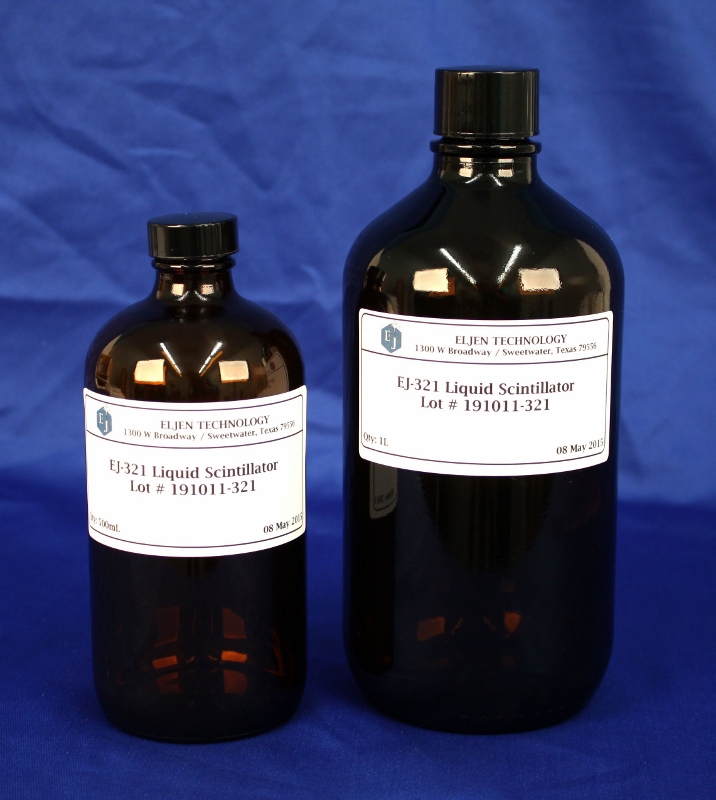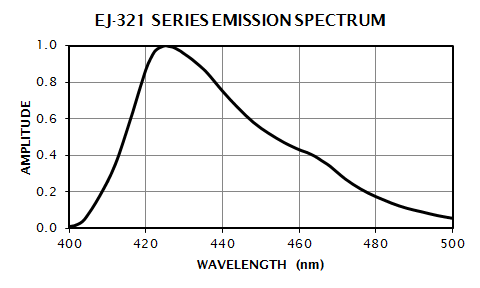MINERAL OIL BASED
EJ-321L, EJ-321H, EJ-321P, EJ-321S

This is a family of four different formulations, EJ-321L, EJ-321H, EJ-321P, and EJ-321S, all based on mineral oil. The main difference between them is light output which varies primarily by the percentage of mineral oil in the various solutions. Other properties which vary with the light output are optical mean free path, flash point and hydrogen-to-carbon ratio. They are recommended for use in large tanks, including acrylic tanks, where lower costs are important.
The tendency for chemical action on container components runs in parallel with the light output. In the construction of acrylic tanks, it is strongly recommended that only cell cast sheet stock, not extruded materials, be employed. Glue joints should be made with solvent action cements and should be annealed afterward. Extruded tubing has been successfully used but only when the inside walls of the cells have been passivated with a thin coating of polyvinyl alcohol. EJ-321P may also be used in tanks fabricated with gray PVC plastic.
| PROPERTIES | EJ-321L |
EJ-321H |
EJ-321P |
EJ-321S |
|
Light Output (% Anthracene)
Saturated with Nitrogen
Saturated with Air
|
39
30
|
52
40
|
28
21
|
66
51
|
| Mean Free Path (400-500nm, in m) | >5 | >5 | >6 | >4 |
| Wavelength of Maximum Emission (nm) |
425 | 425 | 425 | 425 |
| Decay Time, Short Component (ns) | 2.0 | 2.0 | 2.2 | 2.0 |
| Specific Gravity | 0.86 | 0.86 | 0.85 | 0.87 |
| Refractive Index | 1.47 | 1.48 | 1.47 | 1.49 |
| Flash Point (°C) | 102 | 81 | 115 | 74 |
| No. of H Atoms per cm3 (x1022) | 7.37 | 7.03 | 7.47 | 6.48 |
| No. of C Atoms per cm3 (x1022) | 3.66 | 3.72 | 3.63 | 3.83 |
| No. of Electrons per cm3 (x1023) | 2.93 | 2.94 | 2.93 | 2.94 |
